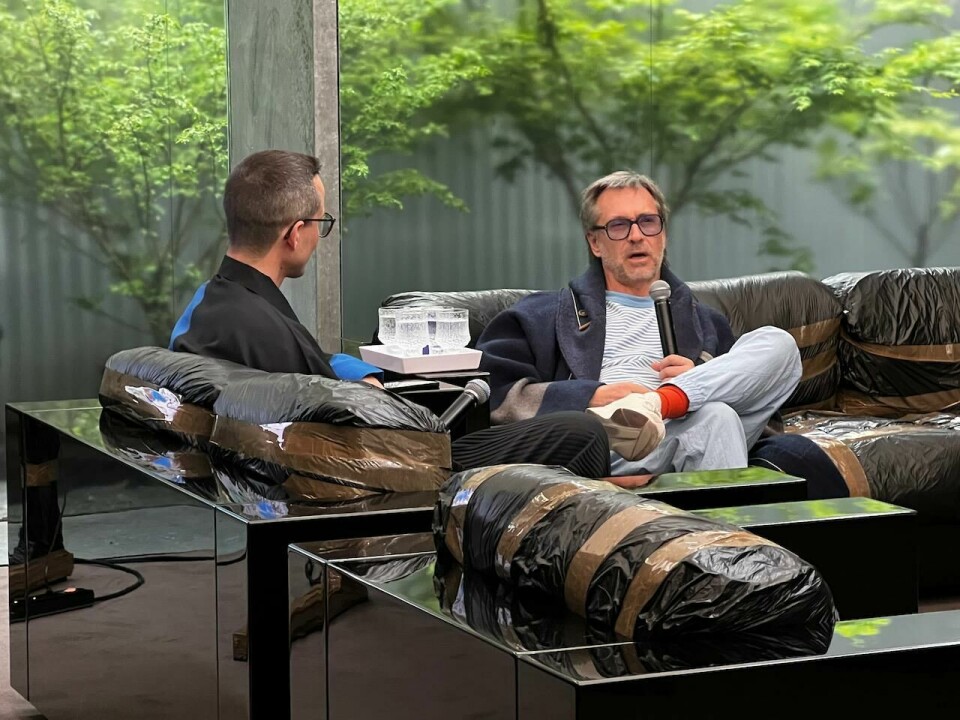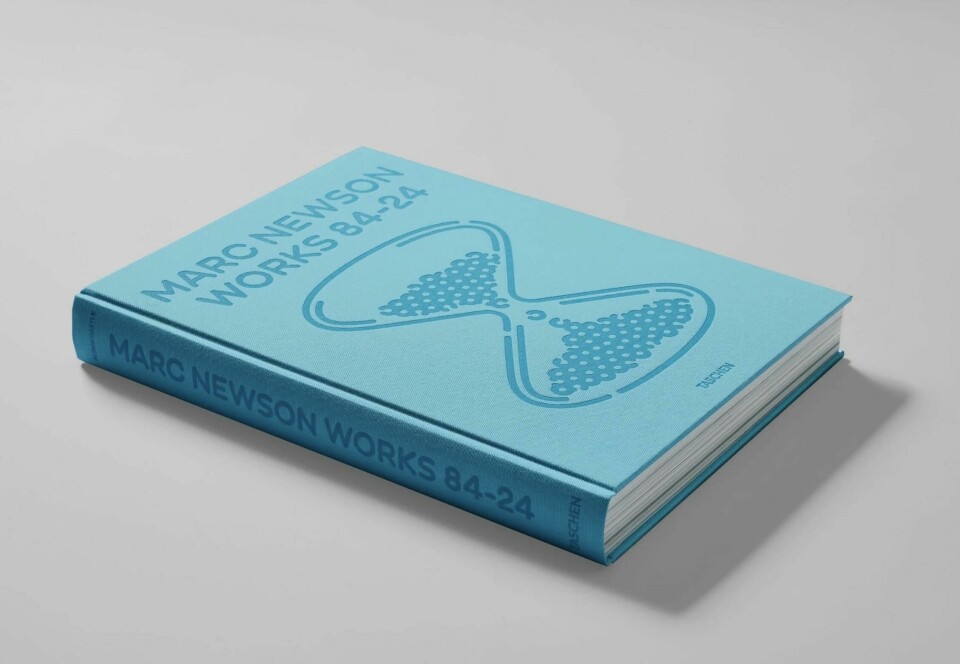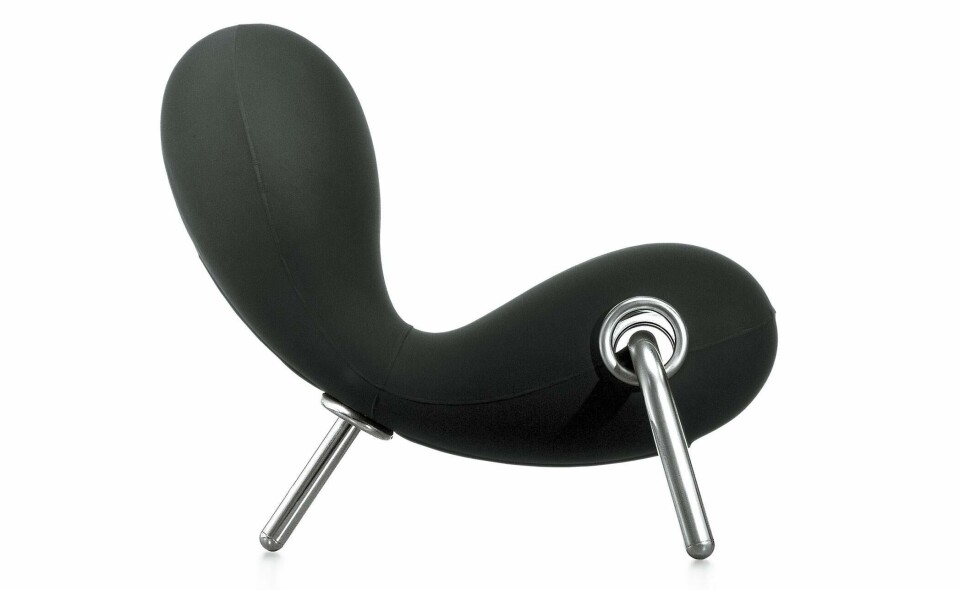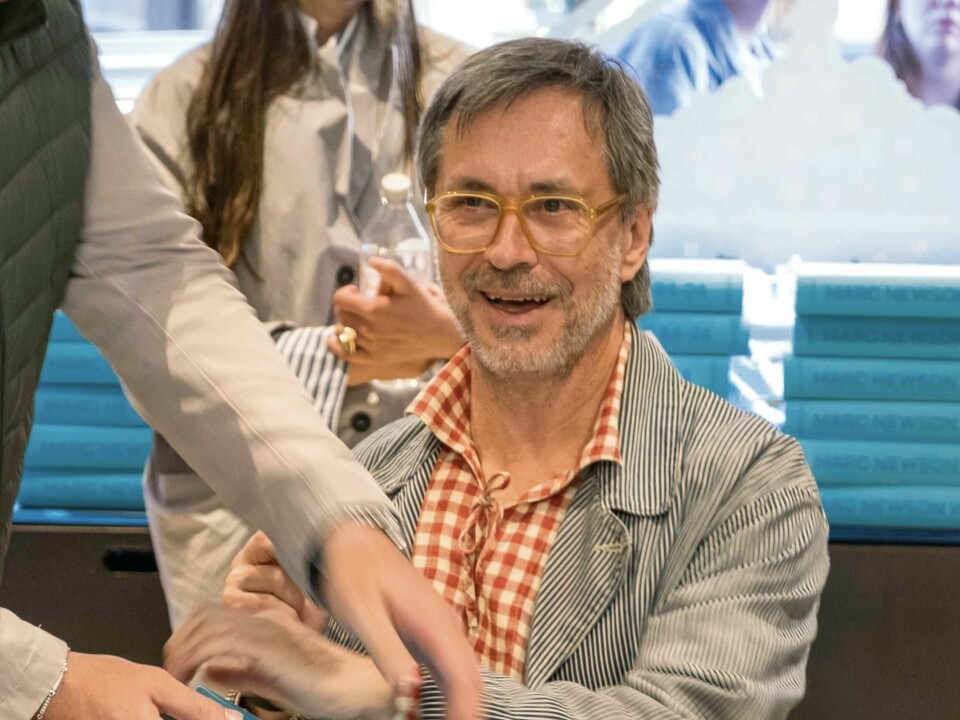
An audience with celebrated designer Marc Newson
The celebrated designer Marc Newson discusses his beginnings, surf culture, a nomadic existence, and more
A number of design luminaries made Milan a stop on their lecture circuits this year. Norman Foster, Yves Behar, Marcel Wanders, and others had lectures or sat on panels discussing a wide range of topics. Marc Newson was in town to launch his new monograph Work 84-24, a catalogue raisonné of the past forty years of work. Car Design News attended an interview with the celebrated Australian designer, as he discussed the early years of his career, favourite projects, and the future. Interestingly, the late Apple car project was not discussed, either in the conversation or the follow-up questions (CDN didn’t get the chance to ask about it either). The world, apparently, has moved on.
Here are some lightly edited highlights from the conversation:

Interviewer: You graduated from school in Sydney in Jewelry Design. Could you tell us more about how it all started?
Marc Newson: Well, it actually started before that. As a teenager growing up in Sydney, Australia, I was interested in creating and making things. I enjoyed making things for myself, by myself.
I was not aware that design could be a professional activity. I very much stumbled into that by accident. I was not brilliant academically, in school, and definitely didn’t want to do anything remotely academic, so I enrolled in art school, which seemed to me the best-and maybe the only option. In art school I studied silversmithing and jewelry design, which seemed the places where I fit in the best.
I was learning how to make jewelry and learning how to work with metals, and that was all good, and was left alone to create. But as time went along, I got interested in furniture design. I was essentially using my time studying jewelry design, justifying it by asserting that furniture a form of jewelry, as it relates to the body like jewelry does. In many ways, furniture doesn’t function without a body, very much the same as jewelry. My lecturers were generous to let me explore this furniture-as-jewelry idea, and then the furniture just sort of took over.
But all of these experiments- jewelry, furniture, silversmithing- they were really just excuses to make things and learn about materials and how to construct things. Growing up in Australia, there wasn’t a traditional design and manufacturing culture like in Italy. It was a very do-it-yourself culture. You had to find the materials and cobble things together.
Which is why I think I was so influenced by the youth culture of the time which, in Australia was derived from surfing culture and streetwear, and things like that. Surfing was the only kind of indigenous home-grown culture and it is why I started using fiberglas and plastics in my work- technologies and material derived from the surfing world.
I: So, your aesthetic language is heavily influenced by surfing and surf culture?
MN: Absolutely. It’s also why much of my earlier work was rounded and, though I dislike the term applied to my work, organic- these rounded, soft, curved, shapes that emerged from creating surfboards and the like. The forms derived from the creation of a surfboard are naturally round and soft, naturally hydrodynamic, and brightly coloured. It’s also why so much of my work has bright colours. Australia is a bright place, the light is bright. Nothing is subdued.
Take for example one of my early successes, the Embryo chair. Organic form, and a cover made of neoprene, like wet suits. It was only available in black, pink, and I think, green. So those were the original colors of the chair.

I: So, after you graduated from art school, did you open your studio right away?
MN: I have always been obsessed with travel, like so many Australians. So, after school I traveled to Japan and I loved it there. I felt like I should have been born there. I identified with the Japanese mentality, the sense of design and execution that pervades everything. It was exciting to experience a culture that thinks in detail as I do. I worked for several years on contract to IDÉE and they help me sponsor my first exhibition at the Salone in 1989. It was my first trip to Europe and I settled in Paris, which seemed very exotic to an Australian. Later, in 1997, I would open a studio in London.
This semi-nomadic existence London-Milan-Paris-Japan afforded me the opportunity to observe different cultures and note how they approach problems of design and function. Eventually, I would settle in London, it was just a more straightforward place to settle, easier to organize the work and personnel. Interesting to note that many of my colleagues are there, but their work is always someplace else.
I: You first exhibited here at the Salone in 1989. How has the Salone changed over the years?
MN: It has evolved and become much, much bigger. When I first started here the Fashion Week was the key event- the Salone was small. Now Salone brings hundreds of thousands people to Milan, and now is a much larger celebration. And it remains an analog event- one where people meet and interact in person. In that sense it’s a bit old school. And yet, it’s young – there are so many young people here – it’s great to see.

I: What advice would you give young designers to help them on their way?
MN: I grew up in a time before computers, before the internet, so I learned drawing and modeling- making things. Don’t lose that. Continue to work at this level, don’t rely on the computer, however useful it may be as a tool.
Audience Questions:
Audience: How’s your Ferrari project going? Will it be something I can afford?
MN: I’m not sure it will be something I can afford. Nevertheless, this is a dream project. I can’t imagine a better company to work for. And, I get to work with my good friend Jony Ive, so that makes it more special, and of course, it’s in Italy! A dream job. But I can’t comment on the specifics.
Car Design News: One of the projects we are most fond of is the Ford021C, a concept car from the turn of the century. Could you discuss the design process and how it has influenced your work since?
MN: The Ford 021C was a concept car introduced about 25 years ago (at the Tokyo Motor Show in 1999-Ed.) It was my first automotive design- I didn’t know anything about designing a car, which my colleagues at Ford took great pains to point out. So, I started with a child’s idea of a car- basically a three-box shape and generic form and then enhance it with details. The project was basically about the details.
It was scheduled to go into production with a company that Ford owned, but it didn’t happen, as Ford was embroiled in a scandal at the time. But I have seen some ideas incorporated into other manufacturers’ designs, and it has influenced my work over the years.
In many ways, I think it is more relevant now than when it was introduced.







